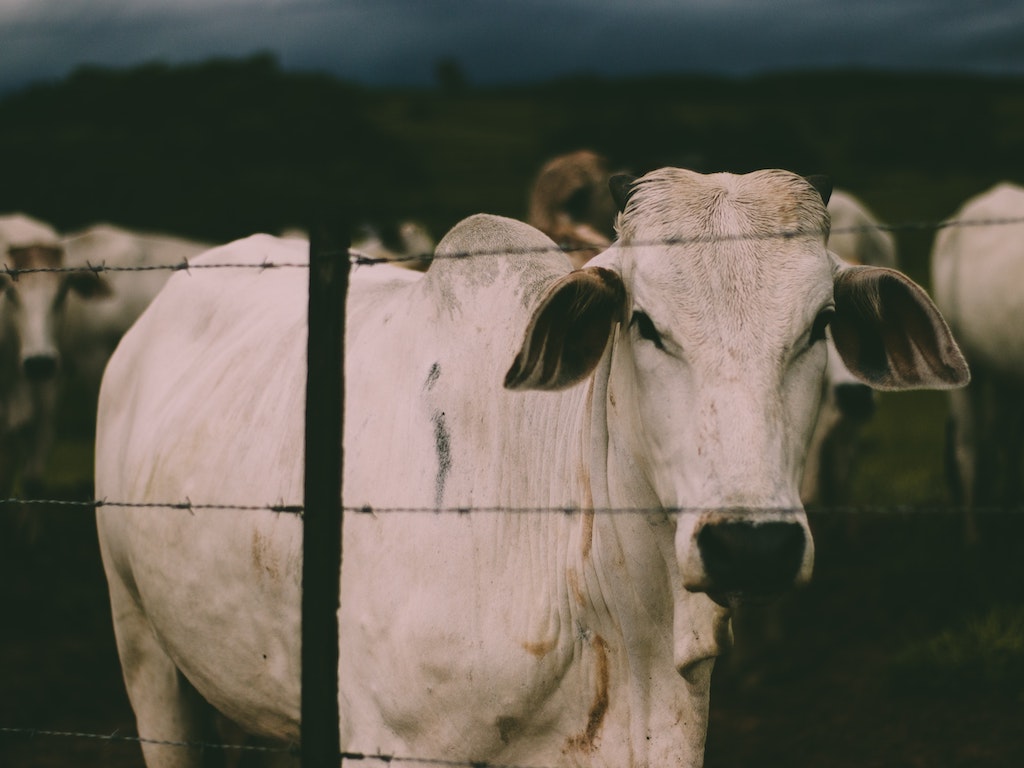4 Mins Read
New data shows that a third of Chinese people are eating more beef since 2020. A great deal of the beef imports into China are coming from Brazil, resulting in a devastating cost to the country’s Amazonian rainforests and Cerrado savannah with 20% of the Brazilian Amazon and about half of the Cerrado region already been cleared, leaving their ability to capture carbon much weakened. With a warming planet, the rise in beef consumption is only doing more damage and further fuelling the effects of climate change.
The pandemic has left Brazil’s economy badly hit, thought according to the consultancy firm Safras & Mercado, the animal agriculture industry has been booming with Brazil supplying 43% of China’s meat imports in 2020, with exports up by a shocking 76% last year compared with 2019.
Historically, the most consumed meat in China is pork. However, 2018 and 2019 saw more than half of the country’s 440 million pigs killed from African swine fever or culled to slow the spread of the livestock-affecting disease. This reduction in pork meat is how beef emerged as the country’s favourite meat protein today.
In a poll conducted by Meat & Livestock Australia, a third of affluent Chinese consumers said they had eaten more beef during 2020 as compared to previous years.
According to Transparency for Sustainable Economies (Trase), a European network that monitors supply chains, in 2017, around 70% of China’s Brazilian meat imports came from the Cerrado, which is the vast tropical savanna region, and from the Amazon rainforest.
In an interview with The Guardian, Professor of agribusiness at the University of São Paulo, Thiago de Carvalho drew attention to the quality of Brazilian beef and its low price as the main reason behind the increase in beef sales. “There has been this boom. Brazilian meat is [among] the cheapest in the world.”
The Amazon provided about a fifth of China’s imports but is actually half of the deforestation risk. Exports are expanding into the Amazon. When you increase demand on the Brazilian agriculture system you are pushing agriculture farther into the forest
Erasmus zu Ermgassen, Author of a study on the impact of beef exports
Since 2019, China is said to have licensed 22 Brazilian slaughterhouses for exports, of which 14 are in the Amazon, while four are in the Amazon state of Pará where Brazil’s fifth-largest cattle herd is located.
A researcher at Louvain Catholic University in Belgium and one of the authors of a study on the impact of beef exports, Erasmus zu Ermgassen said that the Amazon provided about a fifth of China’s imports but is actually half of the deforestation risk. “Exports are expanding into the Amazon. When you increase demand on the Brazilian agriculture system you are pushing agriculture farther into the forest.”
Efforts should be put into helping farmers resolve legal problems, such as land embargoed due to environmental offenses, enabling them to supply meat companies legally. This would stop them from selling to a black market that exists and has always existed
Maurício Fraga Filho, a cattle rancher and president of Pará’s ranchers’ association
Trase also highlighted just how concentrated the meat supply in country is, with data showing Brazil’s big three beef exporters JBS, Marfrig and Minerva managing 72% of Brazil’s beef exports from 2015-2017.
These companies claim to monitor their supply chains. However, they have repeatedly failed when it comes to supervising the indirect supply chain, aka the actual farms which breed and raise cattle that is then managed and commercialised by the ‘direct suppliers’.
Maurício Fraga Filho, a cattle rancher and president of Pará’s ranchers’ association, said that this is a large concern. “The market shouldn’t bar products from Amazon. This will be chaos. Efforts should be put into helping farmers resolve legal problems, such as land embargoed due to environmental offences, enabling them to supply meat companies legally. This would stop them from selling to a black market that exists and has always existed. Today there is no need to deforest anymore.”
Apart from beef imports destroying the Amazon, the demand for soy is also responsible for the continuous agro-ecological damage occuring in the region. In 2019, images emerged from Brazil that drew attention to the 80,000 fires destroying the Amazon rainforest and in 2020, Brazil was again in flames. According to satellite data, these wildfires are started by farmers on purpose to clear land for the unsustainable cycle of cattle grazing and also for producing soy leading to an estimated 7,861 miles, meaning 10% of the wetland region burnt to the ground.
To add to this, Brazil’s far-right populist president, Jair Bolsonaro refused to accept that there are any signs of deforestation or that the burning can be linked to climate change and this lack of ignorance can be seen during his tenure, where deforestation rates in the Amazon surged to a 12-year high.
A recent investigation by the BBC revealed further alarming facts showing that the rainforest, which is also home to around one million indigenous people, is being sold with areas as large as 1,000 football pitches via Facebook marketplace ads.
Lead image courtesy of Unsplash.




